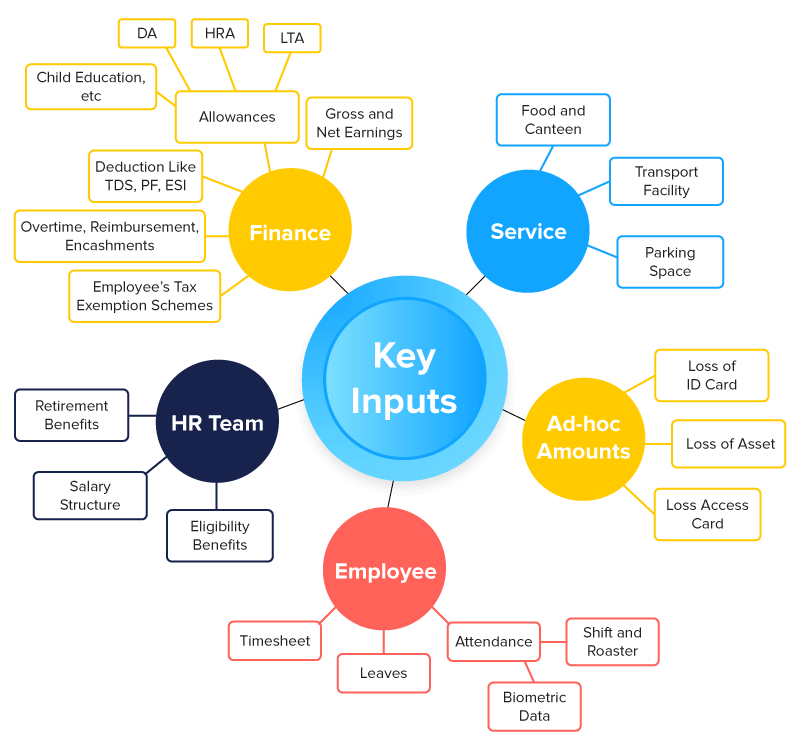Payroll Processing and How It Works?
What is Payroll Processing and How It Works
Payroll processing is an essential business function that revolves around calculating the net salary of every employee by taking in the data like attendance, leave, working hours, and many more. An authorized payroll accountant needs to take all these data with proper validation for an accurate payroll calculation.
There are always tasks that change after a specific time interval. These changes can be changes in your company’s policy, tax slabs, investment schemes, and statutory laws.
To ensure a relevant payroll as per changing regulations, the authorized person must keep himself/herself updated.
This payroll process can be divided into a few stages, which are stated as under
Configure your Pay Policy
By configuring the policy, means how you want to determine your employees’ gross pay.
A most flexible policy is a policy that lets your workforce avail certain benefits like overtime, leave encashment, tax exemption, etc. along with ensuring the company’s interest like statutory compliant. On creating such a policy, HR doesn’t have to waste time verifying it from time to time.
Moreover, integrate your pay policy configurations with the leave, performance, and attendance management platform if you are using an online solution. This will reduce the data errors from various inputs and ensure a proper payment system
Key Inputs and Its Validation
After the formulation of the pay policy, you need a better understanding of all the critical resources required for Payroll related calculations. These components vary from company to company, but here are some common ones listed below

- Gross and net salary calculated from employees’ attendance, leave and performance data selected according to your pay policy.
- Employee’s additional data like overtime, reimbursements, encashment, etc.
- Allowances like HRA, LTA, DA, child education, etc. which you provide.
- Services provided like transportation, parking fee, food, etc.
- Ad hoc amounts like loss of asset, id card, access card, etc.
- Employee availed tax exemption schemes provided by the Government.
These essential resources, when combined form the total earnings giving you exact information regarding additions and deductions to the Payroll processing.
After collecting all these data, it becomes necessary to re-verify that all information is valid accompanying necessary proofs, no active employee is left out, and no inactive employee is considered for payroll procedure.
Net Pay Calculations
Gross pay is said to be the total salary of a particular Employee. At the same time, Net pay is the take-home salary. Consider the following calculations required for employee payroll procedure
Gross pay = Cost to company – Gratuity + Allowances
Net pay = Gross pay ‘ Gross Deductions(TDS, EPF, etc.)
Final Calculation
Once you have come up with all the required data/key inputs along with its validation, then comes the process of finalizing the payroll by addition and deduction of corresponding collected data. You need to notify your linked bank to transfer the processed salary into each Employee’s bank account. And yes, don’t forget to confirm your company’s bank account, if it possesses the required amount to be paid to the employees.
If you are using automated HR software, well and suitable, because it minimizes the majority of your work. You need to combine all these inputs and feed them to the system, and within only one click, your finalized salary is ready to be distributed.
But if you are still using conventional methods of maintaining spreadsheets and using its in-build math and formulas, you should double-check all the data to ensure minimum mistakes.
Company’s Statutory Deductions
Your payroll management process is never complete unless it is cent percent statutory compliant. Certain deductions like TDS (Tax Deduction from Source), PF (Provident Fund), ESI (Employees’ State Insurance), and PT (Professional Tax) for social and medical security, must be deducted from Employee’s salary during payroll processing, as per Indian Government’s Rules and Regulations. Further, after deduction, these are needed to be deposited in corresponding trusts and banks.
Payslip Distribution and Payroll Accounting
You can choose how to authenticate the payment, like a check, bank transfer, or cash. The most preferred way is through bank transfer. You can then ensure this by giving payslips to your employees.
Payroll accounting refers to storing records of all financial transactions performed. It is important to keep a record of transaction history for an official inspection like an audit.
Now when it is clear about the step of the payroll process, let dig into the methods used for calculating pay-roll.
Our services can also remind you through our website.
We even have Facebook, Instagram and Linked in! Comment or like if your more of the social media type 😉
IRI NextForm database migration
Tag:#PayRoll, #PayRollProcess, #PvtLtd, #QualityHR
